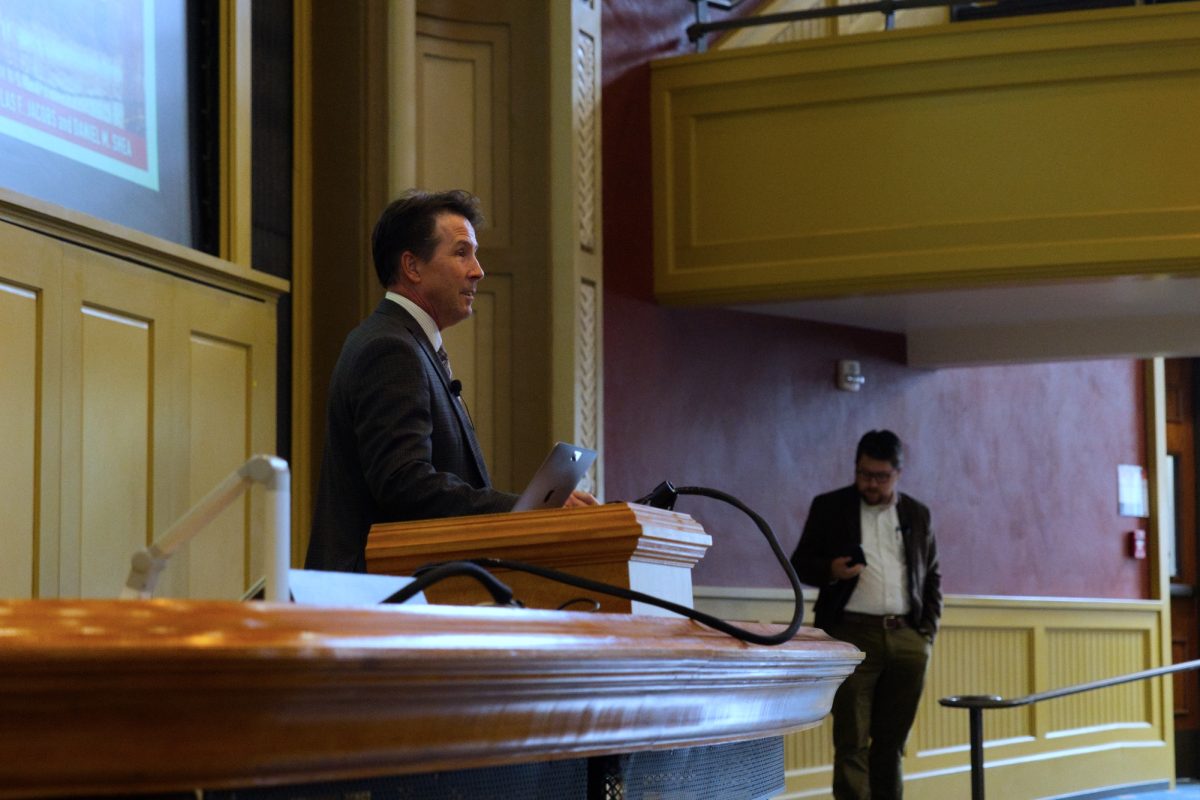STV9’s SCOLA goes off the air in Ames
January 11, 1999
After being transmitted to Iowa State students for six years, SCOLA disappeared from the student-run STV9 at the end of last semester’s Finals Week.
Funding for the programming is no longer being provided by groups within the university.
SCOLA, or Satellite Communication for Learning, is a “non-profit educational organization transmitting international television programs for educational use via satellite,” according to its Web site.
Its channels provide programs from more than 40 countries, and all the programs are in their original form.
The organization is based in McClelland.
According to the Web site, SCOLA delivers its three channels to about “500 universities and colleges, several thousand elementary and secondary schools, 50 cable television systems and language schools and training sites within the United States government.”
The three SCOLA channels formerly transmitted to ISU covered news programs from about 50 countries; variety, arts and entertainment from about 15 countries; and a “China Channel,” which offered several types of programming in Mandarin from the People’s Republic of China.
The programs were introduced to ISU six years ago, via STV9, but over the years the cost of SCOLA increased. The price is based on the number of students reached, and ISU’s last bill was $5,500 for one year, said Steve Coon, adviser to STV9 and professor of journalism and mass communications.
The decision to drop SCOLA was made in December by STV9 after a meeting between the campus organizations that supported SCOLA. These organizations included the Office of International Students and Scholars (OISS), representatives from the provost’s office, the Department of Foreign Languages and Literatures and STV9.
Of the above mentioned groups, only the Department of Foreign Languages and Literatures and STV9 were willing continue their funding, Coon said.
“Now we’re not sure what will take its place,” he said. “We might see more syndicated programs, or we may produce more programs locally.”
He added that more people will have to be involved in STV9 after SCOLA’s discontinuation.
Coon said he has not heard any reactions from international students yet, and he is not sure there will be any.
“The Internet may be taking over,” he said. The reason for this is that it gives a faster update on what happens in the students’ home countries, he said.
Ruth Ellis, program coordinator for OISS, and Keith Swanson, electronic technician for the Foreign Language Learning Resource Center, also said they had not heard any feedback yet on the decision to remove SCOLA.
“I didn’t even know that it is being taken off,” Swanson said. “We will definitely miss it here.”
Swanson said SCOLA has been used as a valuable teaching tool for the last few years.
“Now we will have to look for other means,” he said.
Swanson said videotaping newscasts and “re-running” them cannot be done, as copyright laws allow newscast tapes to be stored for only 10 days.
“We might have to produce material ourselves,” Swanson said.
He said a monthly or even weekly program could be an alternative, and he figures STV9 would be the logical medium to use.
“We have some radio stations that are being transmitted in foreign languages,” Swanson said. These are available both through ordinary radio frequencies as well as through satellite receivers that are already in place at ISU.
“Alternatively, we could use more international Web sites,” he said, adding that seeing a foreign language written and hearing it being spoken are two different things.
He also said they might have to go back to using more books “just as in the old days.”
Scott St. Aubin, senior in sociology and psychology, also was surprised that STV9 is no longer carrying the channel. He said he finds it hard to believe that cancellation is due to funding concerns.
“Exposure is vital when acquiring a new language,” he said.
St. Aubin said removing SCOLA from STV9 ultimately will reduce exposure for those who want to learn.
“SCOLA has been a welcome change from normal textbooks,” he said.
Sybil Mahan, marketing director of SCOLA, said she heard about SCOLA possibly be eliminated but did not know a decision had been made.
“This is so disappointing,” she said.
She emphasized that SCOLA and ISU have had a long-standing relationship, spanning several years. She said ISU was one of the first universities to use SCOLA.
Although she has not had any feedback from international students, Mahan said SCOLA has had positive feedback about their channels from these students in the past.
“I’m sure we’ll hear from them soon,” she said.
Mahan said SCOLA was originally brought to ISU by John Thomas, lab director at the Department of Foreign Languages and Literatures.
She said STV9’s decision does not seem like a catastrophe, because within three to six months, SCOLA might be up and running in Ames again.
“I hope we’ll make it back to Iowa State,” she said. “Hopefully, we’ll be back at STV9 in the near future.”






